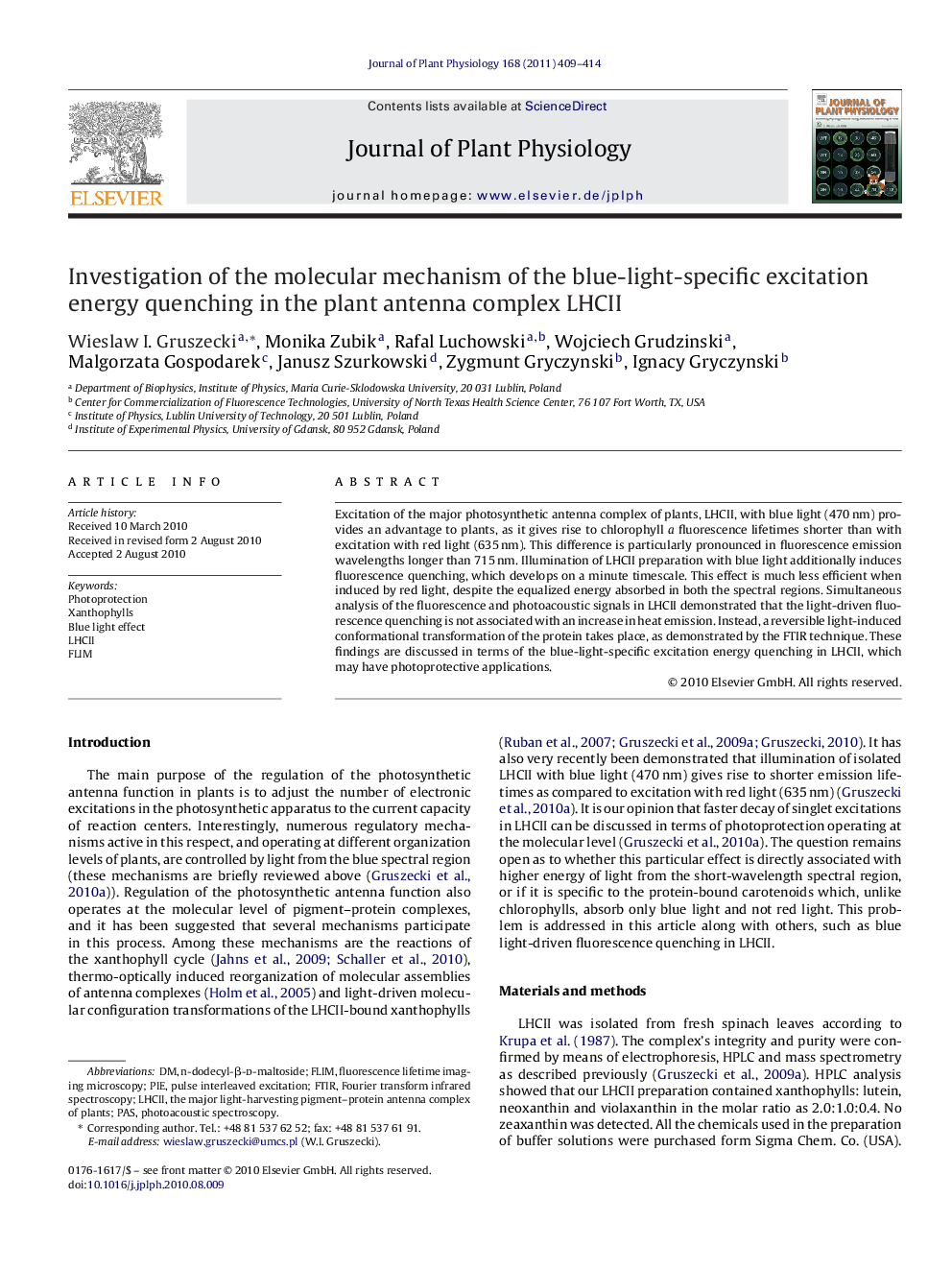| Article ID | Journal | Published Year | Pages | File Type |
|---|---|---|---|---|
| 2056802 | Journal of Plant Physiology | 2011 | 6 Pages |
Excitation of the major photosynthetic antenna complex of plants, LHCII, with blue light (470 nm) provides an advantage to plants, as it gives rise to chlorophyll a fluorescence lifetimes shorter than with excitation with red light (635 nm). This difference is particularly pronounced in fluorescence emission wavelengths longer than 715 nm. Illumination of LHCII preparation with blue light additionally induces fluorescence quenching, which develops on a minute timescale. This effect is much less efficient when induced by red light, despite the equalized energy absorbed in both the spectral regions. Simultaneous analysis of the fluorescence and photoacoustic signals in LHCII demonstrated that the light-driven fluorescence quenching is not associated with an increase in heat emission. Instead, a reversible light-induced conformational transformation of the protein takes place, as demonstrated by the FTIR technique. These findings are discussed in terms of the blue-light-specific excitation energy quenching in LHCII, which may have photoprotective applications.
